Time for a very special Q&A: Simon Lumb is someone I’ve wanted to interview since I first started this website. He’s one of the most experienced growers of Nepenthes in the UK, having grown carnivorous plants for over 30 years.
Long-time growers may remember Simon from his website Treesmill Tropicals, which operated in the early 2000s, or from his forum contributions under the name ‘Threeskins’. I first met Simon through one of the many Facebook groups for Nepenthes fans - upon seeing photos of his incredible plants, I immediately began pestering him to share his collection and experiences on the blog.
Be sure to subscribe to Tom’s Carnivores for more articles like this.
Thanks, and enjoy.
TB: Firstly, when did you start growing carnivorous plants?
SL: I’ve been growing CPs for over 30 years. I like all plants and could quite easily have collected and grown many other different genera. I think it’s the collector’s mentality; by nature we’re slightly obsessive. Let’s face it, have you ever met a normal CP grower?
I became interested in CPs way back in the early 1980s. My first carnivorous plant was of course a Venus flytrap, which was given to me as a present for my windowsill at university. Needless to say, the poor plant didn’t make it past the first winter, but the growing bug (excuse the pun) and interest were established.
In the late 80s I visited the original ‘Sarracenia Nurseries’ located at Mill Hill, London, with my future and long-suffering wife. Although they had a wonderful Sarracenia collection, what really caught my eye were a few strange-looking plants in a tiny greenhouse that was tucked away at the end of the garden. I recognised these as pitcher plants or monkey cups but that was the extent of my knowledge. I came away that day with N.x chelsonii, my first ever Nepenthes, and a Cephalotus. The latter I grew for 20 years before it died.
Over the next few years my interest grew and I started to read more. This was before the internet and yes, we did survive - just! In those early days there were far fewer species known, let alone available to buy, and to find out anything about CPs you had to join the UK CP Society. Here you would meet growers and find out by word of mouth who grew what. It was at one of these early meetings that I met growers such as Matt Soper, long before he had built his fantastic collection and business, and an early Nepenthes enthusiast called Paul Harwood who mentioned to me the name of a good Nepenthes grower in Germany, Andreas Wistuba. In my opinion thanks to the efforts of Andreas, with his extensive collection of species, he has been responsible for bringing Nepenthes to more people worldwide than anybody else.
Click on any photo to zoom in. Use arrow keys or swipe to navigate.
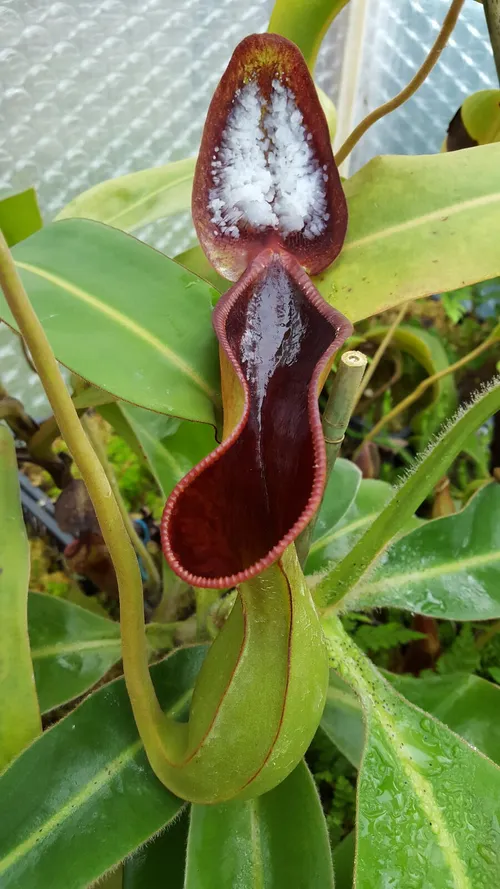 01. Nepenthes lowii
01. Nepenthes lowii 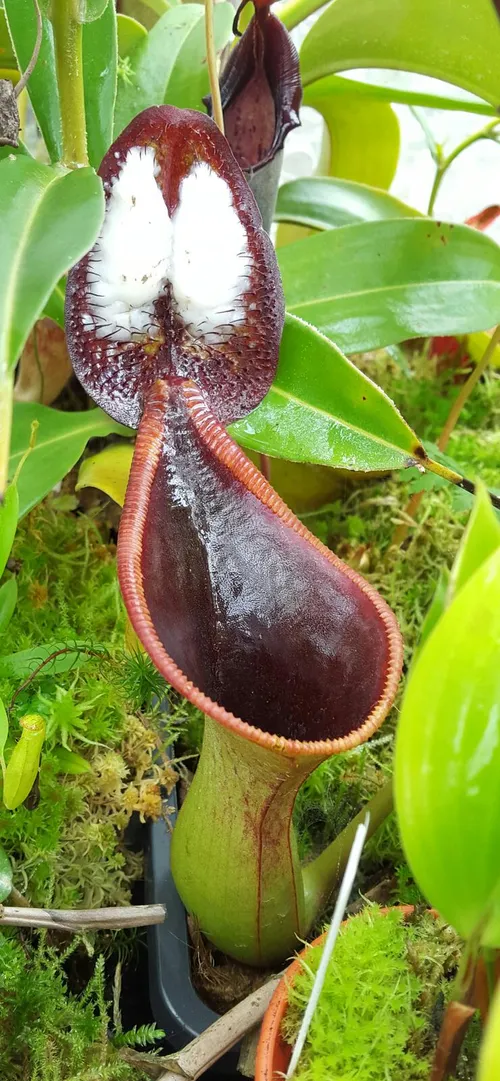 02. Nepenthes lowii
02. Nepenthes lowii 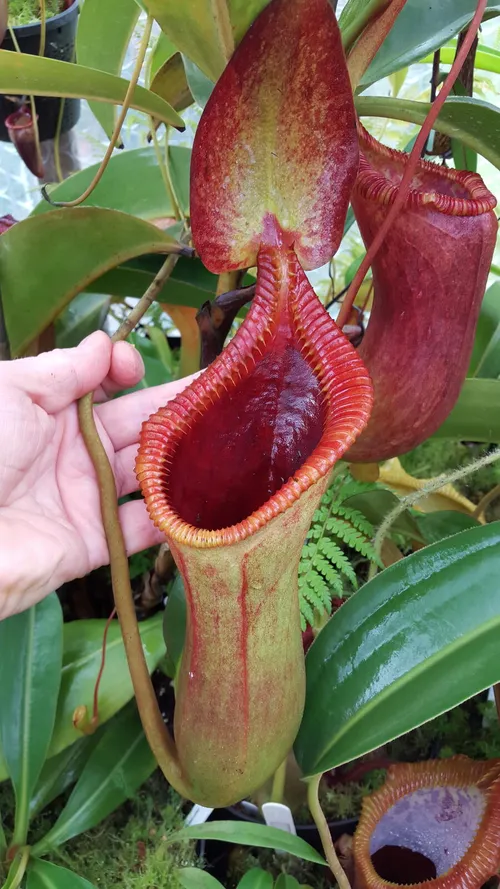 03. Nepenthes x trusmadiensis
03. Nepenthes x trusmadiensis 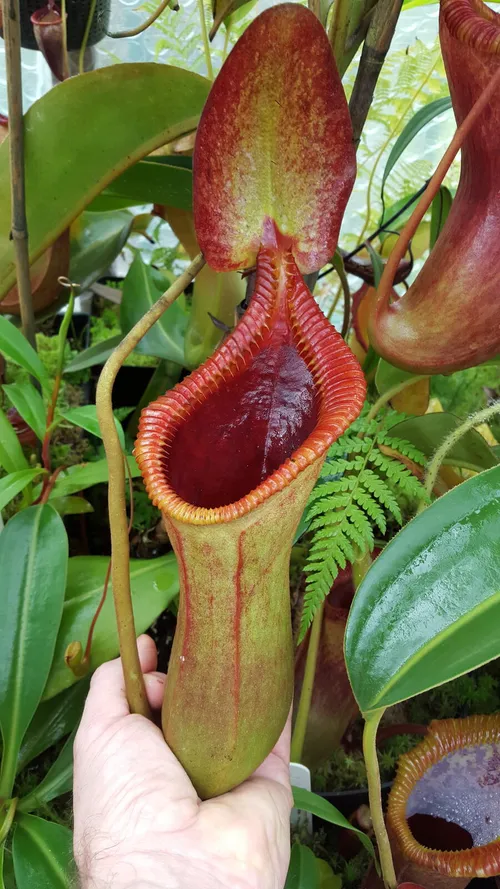 04. Nepenthes x trusmadiensis
04. Nepenthes x trusmadiensis 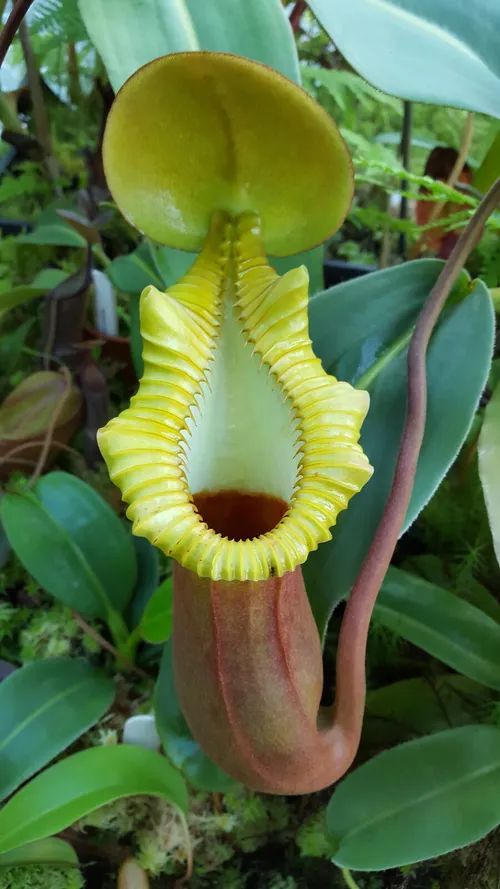 05. Nepenthes x trusmadiensis
05. Nepenthes x trusmadiensis 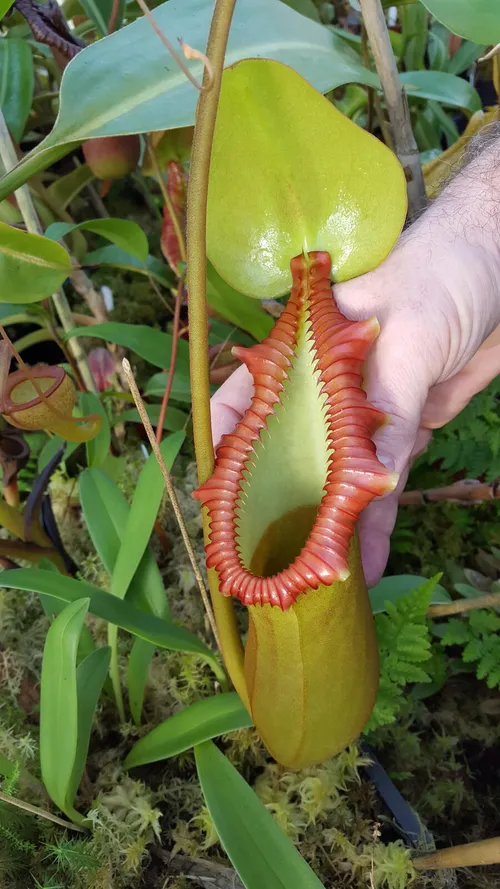 06. Nepenthes x trusmadiensis
06. Nepenthes x trusmadiensis 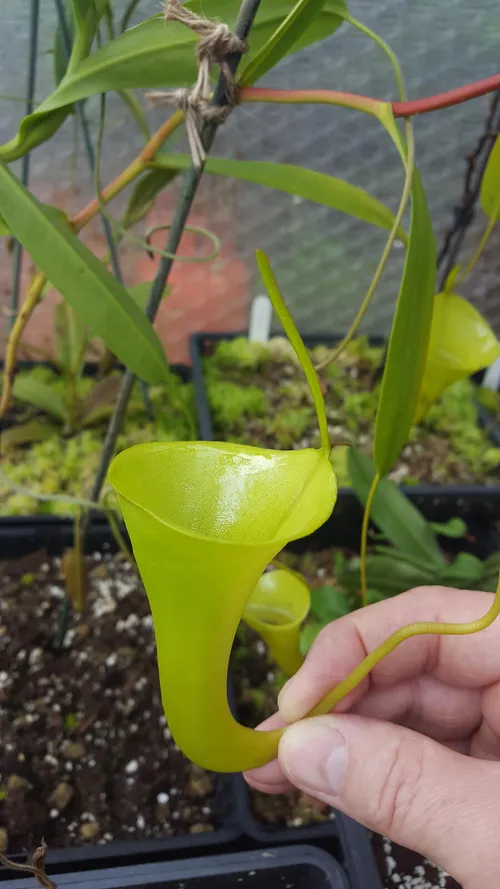 07. Nepenthes inermis
07. Nepenthes inermis 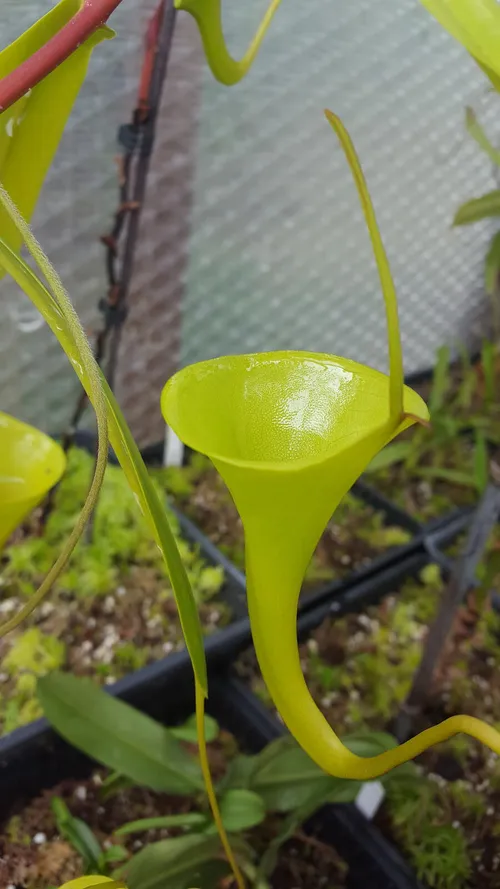 08. Nepenthes inermis
08. Nepenthes inermis From that point on, my focus became Nepenthes.
Once the internet arrived it became a very small world indeed. To some extent, the excitement that I used to get in trying to source plants - the thrill of the chase - was lost. However, one huge advantage was that it was now possible to see photos of other growers’ collections. I remember looking at and being inspired by Jeff Shafer’s website ‘Plants with Attitude’. Jeff really is a top grower, we like the same characteristics in plants and I’m always in awe when I see his photos.
It also became easier to obtain rare or sought-after species. Websites selling new species of Nepenthes began to appear and I became an importer, bringing plants from Malesiana Tropicals, Borneo Exotics, and Exotica Plants into the UK and Europe for the first time.
Over the years I have been lucky enough to travel on several expeditions to Sumatra, Borneo and Sulawesi where I saw these beautiful plants in the wild. These trips can be very challenging and uncomfortable at times but are hugely rewarding, and I would encourage anyone who has a serious interest to undertake one. It’s not just about the plants; if you go with a good set of friends, it is a great bonding experience and you share lifelong memories.
Click on any photo to zoom in. Use arrow keys or swipe to navigate.
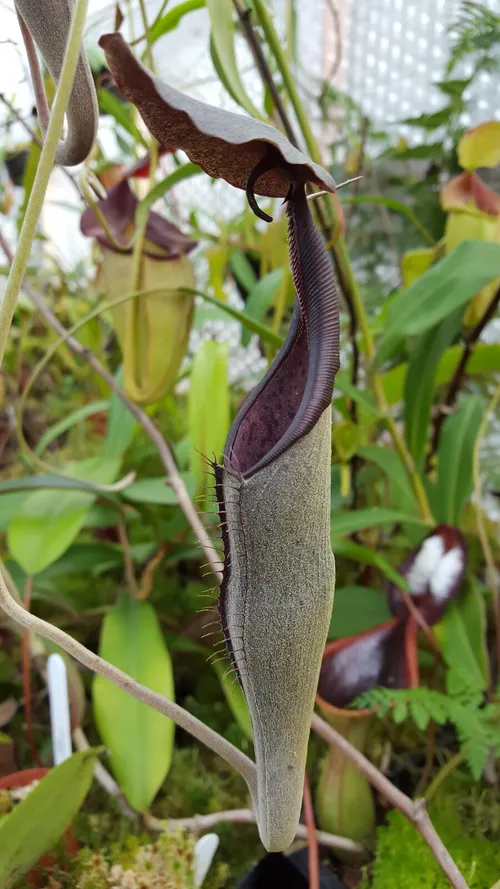 09. Nepenthes lingulata
09. Nepenthes lingulata 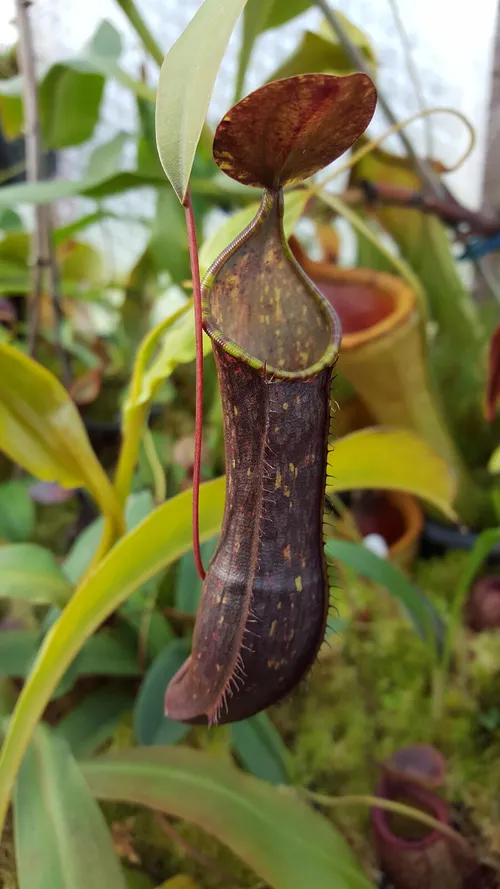 10. Nepenthes muluensis
10. Nepenthes muluensis 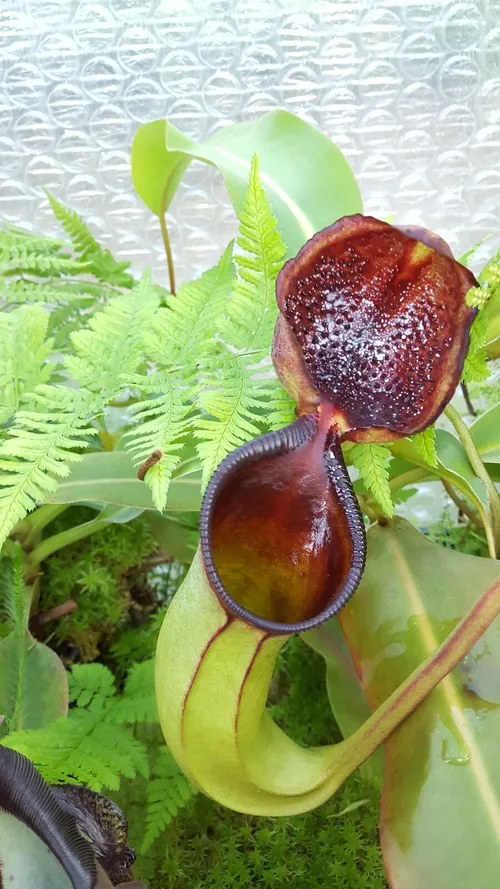 11. Nepenthes ephippiata
11. Nepenthes ephippiata .KSXv4VX3_ZJ8Qea.webp) 12. Nepenthes ephippiata (AW)
12. Nepenthes ephippiata (AW) .OnAKwRcK_ZL0l0R.webp) 13. Nepenthes villosa (BE)
13. Nepenthes villosa (BE) 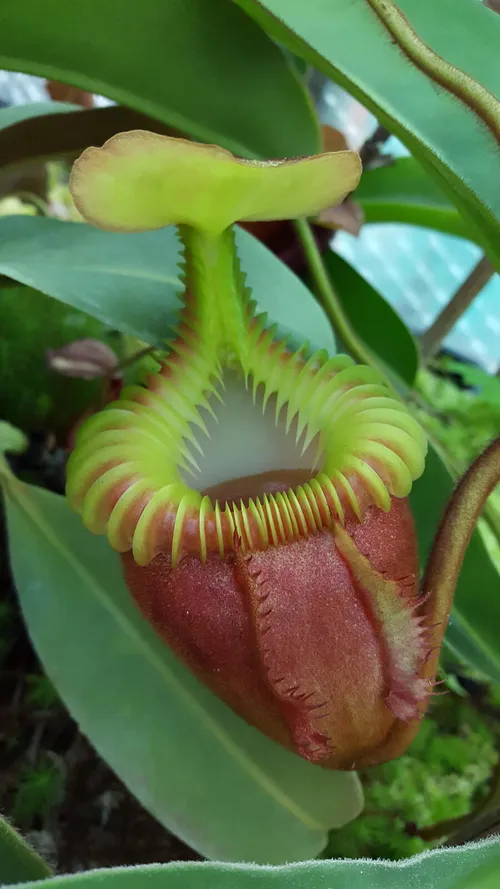 14. Nepenthes villosa
14. Nepenthes villosa 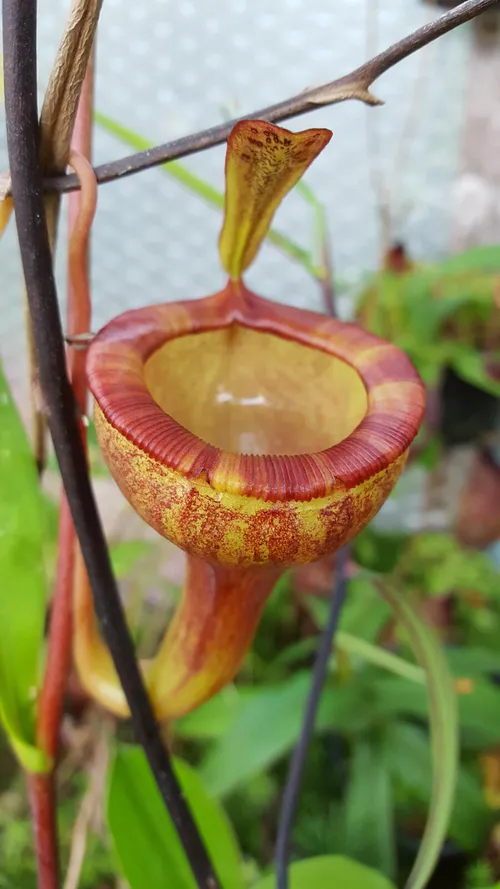 15. Nepenthes jamban
15. Nepenthes jamban 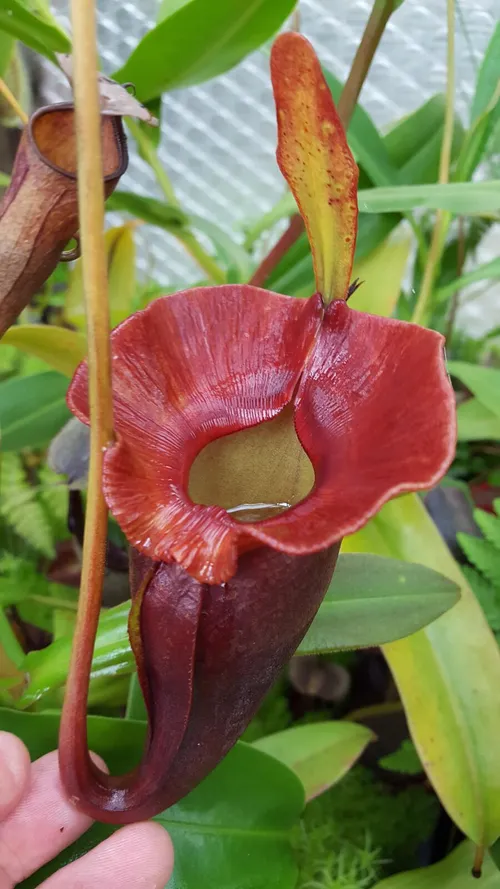 16. Nepenthes jacquelineae
16. Nepenthes jacquelineae So is your focus still Nepenthes? What is your growing setup today?
Yes, I now grow primarily highland Nepenthes species plus a few hybrids. I don’t have a particularly big greenhouse: it’s only 12ft x 10ft made of red cedar and half-length glass paneled. I like the flexibility of wood, and it’s great for adding extra makeshift attachments. To be honest I am always slightly embarrassed when someone asks to see my plants. Over the years I have posted some very nice photos and I think the perception is that I have a big greenhouse and a large collection. This couldn’t be further from the truth, so I think to myself ‘why would anyone want to make a journey to see something that’s only going to last 10 minutes?’
The greenhouse is lined with horticultural, large bubble insulation, which takes no time at all to add and replace with a staple gun. I’ve always been very low-tech and I don’t particularly want an overcomplicated hobby. Compared to many growers I am a complete luddite. I like the simplicity of being able to leave the greenhouse like any other greenhouse and not be too tied to it. One problem that I used to suffer from (and now recognise in other growers) is that they become slaves to their plants and fear leaving them to travel and enjoy other things in life. Top tip: life’s is too short. This a hobby and they are only plants.
I don’t use any artificial lighting in the greenhouse, although my plants do stop growing over the winter months. There’s no doubt that lighting will keep the plants ticking over, but growth starts again around March and for the few months of minimal winter growth I can’t justify the expense of artificial lighting.
My main challenges are to keep the greenhouse warm in winter and cool in summer. To be honest, even in the UK I find keeping the greenhouse cool in summer to be the hardest challenge. I try to do this with a hydrofogger; this is fed with rainwater collected in water butts via downpipes from the house roof. I only use rainwater, unfiltered. This is combined with very heavy shading, which is thrown on and off the roof depending on the weather.
I have a small extractor fan that is useful for exchanging air, but on the rare occasions that we have exceptionally hot days I switch this off as I find it has no cooling function and it reduces the humidity too much. I find that the plants can tolerate high temperatures if the humidity is kept very high. It sounds silly, but I monitor the greenhouse environment by how it feels and smells. I think this it’s just an instinct that I’ve picked up over the years of what has worked well and what hasn’t.
I’m always reluctant to give growing ‘tips’ because what works for one person doesn’t always work for another. However, if I could give one good tip for keeping the humidity high and creating a nice environment it would be to cover the greenhouse floor with pond liner or heavy-duty plastic and allow it to overlap around the edges by about 5inch. Cover this with about 2-3-inch-deep of pea shingle and then flood it regularly with water to generate a nice sluice. It creates a huge surface area for evaporation and a lovely damp humid smell in the greenhouse.
In winter I use an electric BioGreen fan heater to keep the temperature above 10°C. Until recently I used a propane gas heater, but the thermostats are not particularly accurate, and the pilot light can be very temperamental. Over 25 years I’ve had two major disasters where on both occasions I lost my entire collection due to mid-winter propane gas heater failure. I am someone who regularly takes 2-3 week winter holidays, so an upgrade to electric was long overdue. I still have the propane heater as a backup. One comment I would make is that when I used the propane heater, the plants were noticeably healthier looking in winter than they are with an electric heater. This was probably due to the by-products of burning gas (increased CO2 and H20) which benefited the plants. The electric fan heaters create a much drier heat, and generally dry out all the plants and media.
Click on any photo to zoom in. Use arrow keys or swipe to navigate.
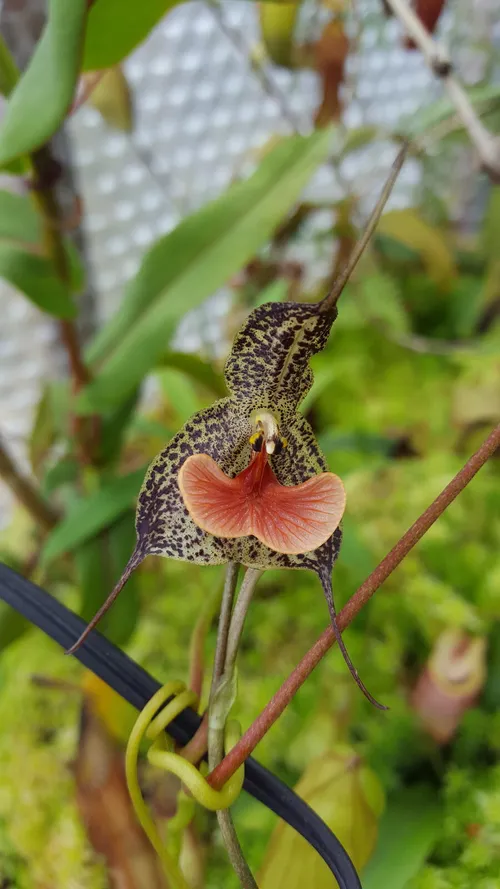 17. One of Simon's orchids
17. One of Simon's orchids .B3YEP5fT_Z1WdtJO.webp) 18. Nepenthes x alisaputrana (rajah x burbidgeae)
18. Nepenthes x alisaputrana (rajah x burbidgeae) 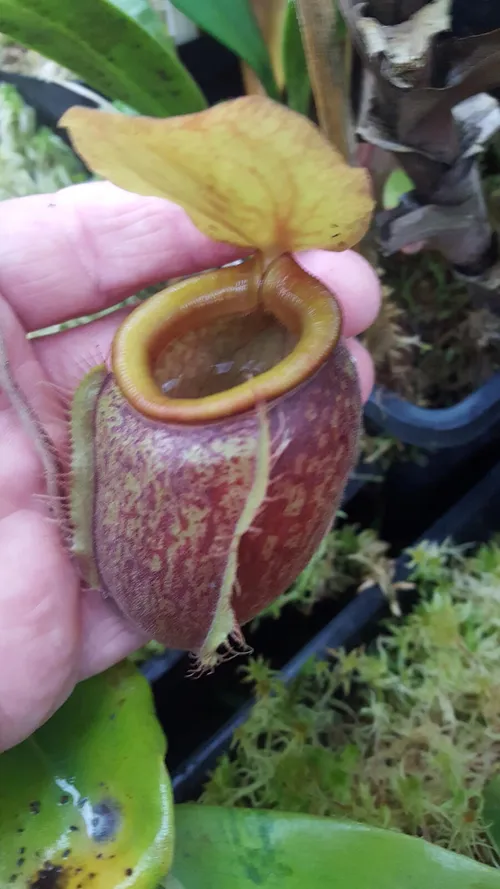 19. Nepenthes undulatifolia
19. Nepenthes undulatifolia .BUzAVSgL_RhIqE.webp) 20. Nepenthes undulatifolia 'green' (AW)
20. Nepenthes undulatifolia 'green' (AW) 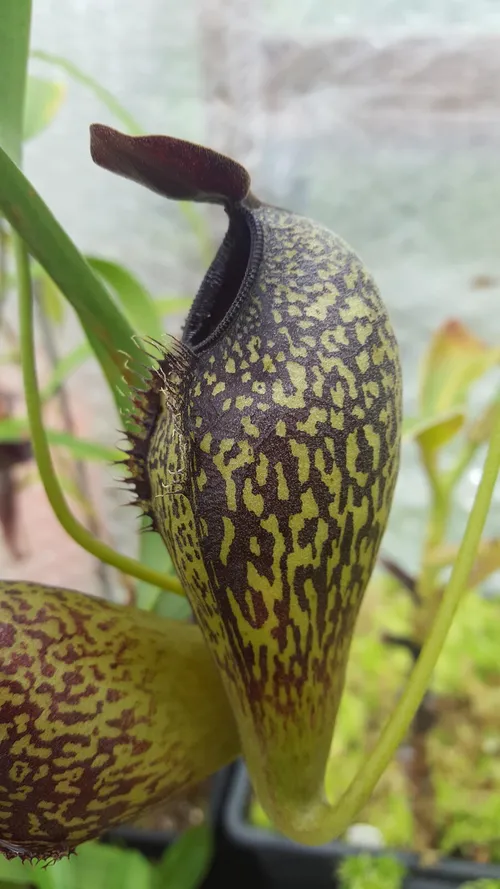 21. Nepenthes aristolochiodes
21. Nepenthes aristolochiodes 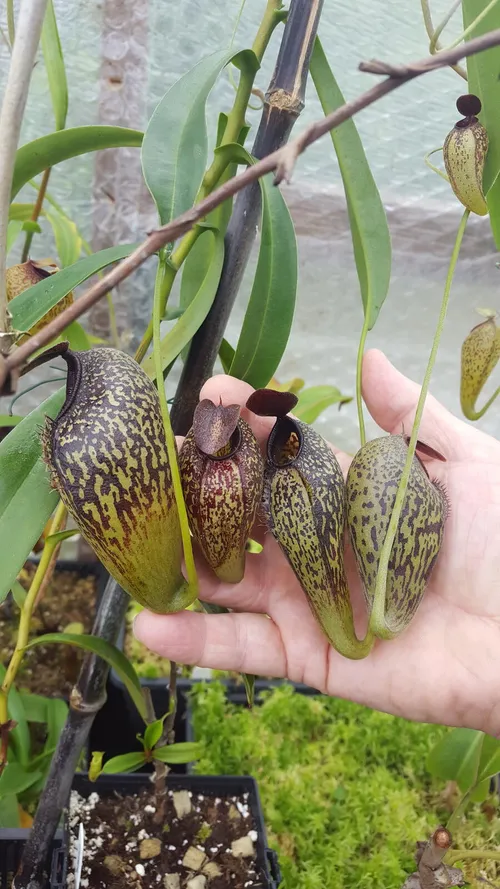 21. Nepenthes aristolochiodeslochiodes
21. Nepenthes aristolochiodeslochiodes 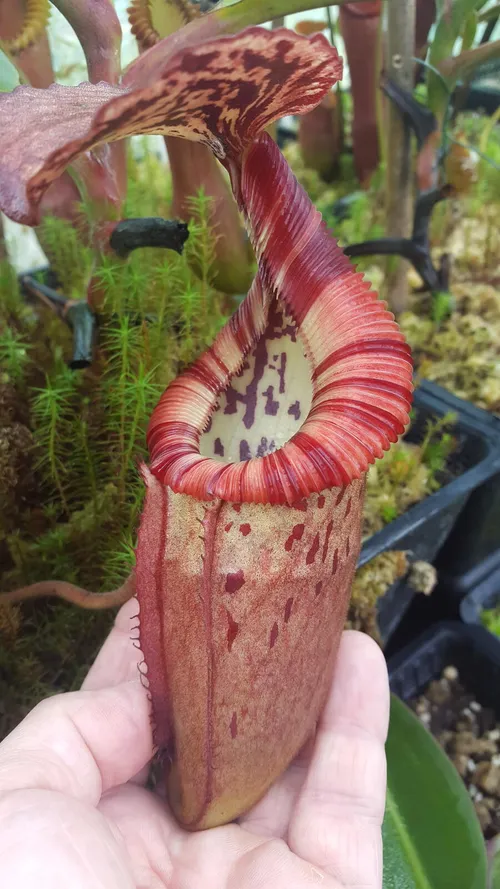 23. Nepenthes burbidgeae x edwardsiana
23. Nepenthes burbidgeae x edwardsiana 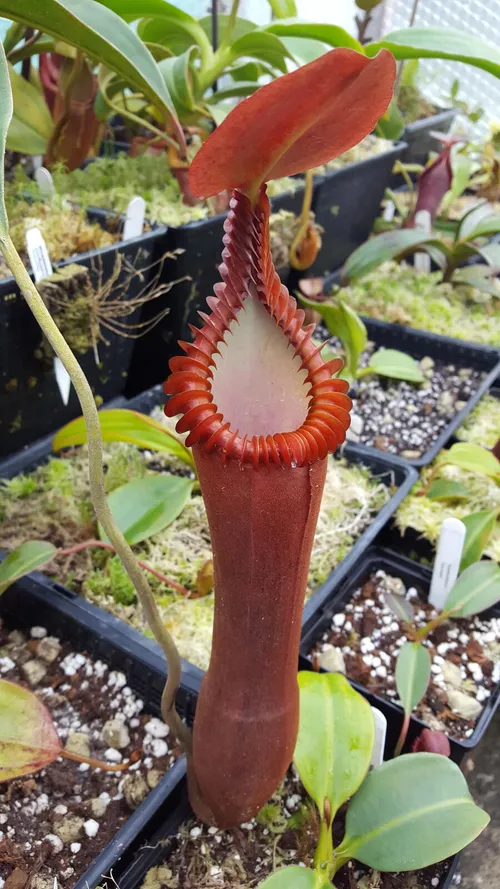 24. Nepenthes edwardsiana
24. Nepenthes edwardsiana Do you currently grow any other genera alongside your Nepenthes? Do you also have a temperate greenhouse for Sarracenia, Darlingtonia, and so on?
Yes, I in my Nepenthes greenhouse I have also started to collect and grow a few miniature orchids (Masdevallia, Dracula, Bulbophyllum) and tropical ferns as companion plants. I prefer to see a more natural-looking greenhouse rather than one that is too clinical in appearance.
I also have a very small Sarracenia collection and a few Darlingtonia growing in a separate 10 x 6ft aluminium greenhouse. I don’t intend to expand this collection; I prefer to grow just a few nice forms of the different species and select hybrids.
You’ve been growing these plants for over 30 years. How have your motivations and priorities changed over the years?
My first greenhouse went up in 1989. It was a small 6’x 6’ft aluminium house and I managed to grow a range of different CPs reasonably well for a couple of years. The problem when you first start growing is that you want to collect and grow everything you can, and you rapidly accumulate lots of different plants. Over time you realise that to grow everything optimally you must provide slightly different growing conditions and in a small space you just can’t do this. Inevitably some plants are bound to suffer, therefore after 2 years I decided to focus on growing highland Nepenthes. This was certainly not the easiest or most economical option I could have picked at the time, but they were unusual, exotic and rare, and as I mentioned earlier I used to enjoy trying to source the plants.
For most of my growing years I tried to collect as many different highland Nepenthes species as I could. This was my stamp collecting mentality, but over the last 3-4 years I’ve viewed things from a horticultural perspective and not a collecting one. As such, I have thinned my collection down dramatically and I’m now very selective about what I grow and buy, growing only those plants that I perceive as being the most spectacular/unusual/iconic or simply what I can grow best.
I do prefer the toothy species, and Nepenthes hamata is my favourite. I could happily dedicate an entire greenhouse to growing multiple forms of this species. What I like about Nepenthes hamata is that the pitchers at all stages of the plant’s growth are spectacular. It’s also interesting in its vining stage, readily producing abundant aerial rosettes creating a fantastic-looking plant.
It seems crazy now because hybrids are hugely popular, with some spectacular and extremely valuable plants in cultivation, but in the early years I was a real purist for growing only species. I had many interesting flowering plants, but I used to cut all my flowers off. I didn’t even consider making hybrids but then I started to see some of the great plants that Geoff Mansell was making and realised that hybrids could be fun.
Click on any photo to zoom in. Use arrow keys or swipe to navigate.
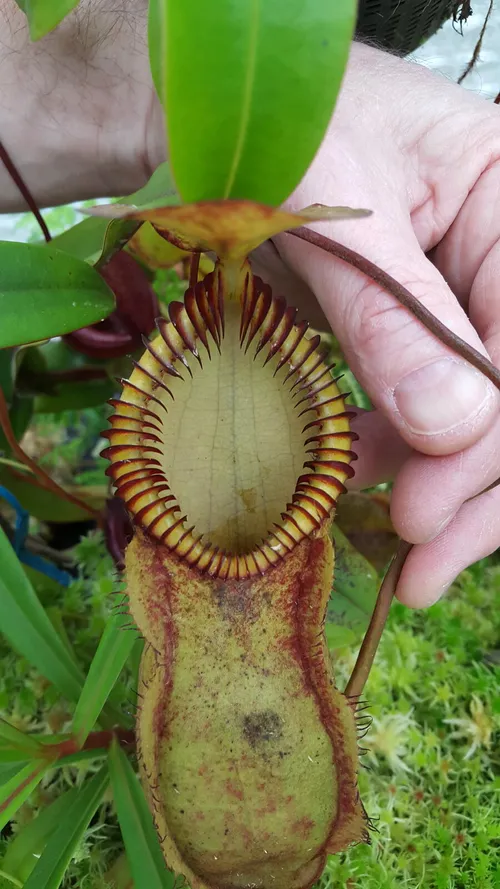 25. Nepenthes 'red hairy hamata'
25. Nepenthes 'red hairy hamata' 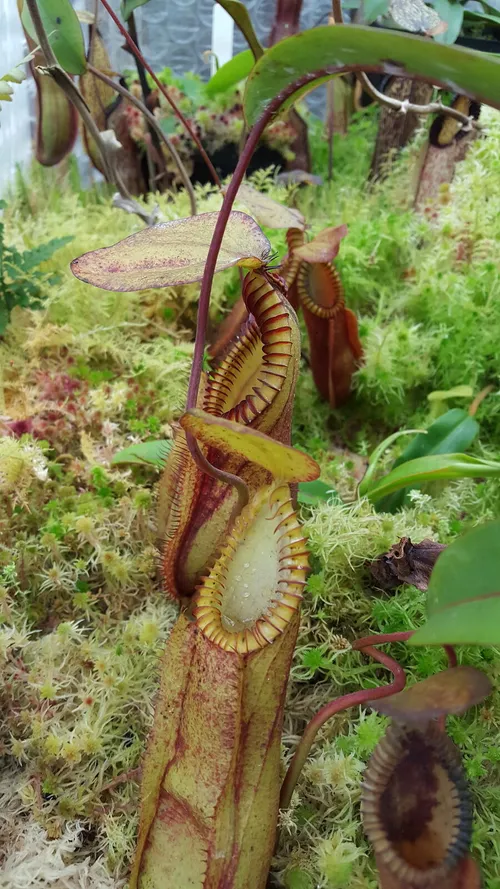 26. Nepenthes 'red hairy hamata'
26. Nepenthes 'red hairy hamata' 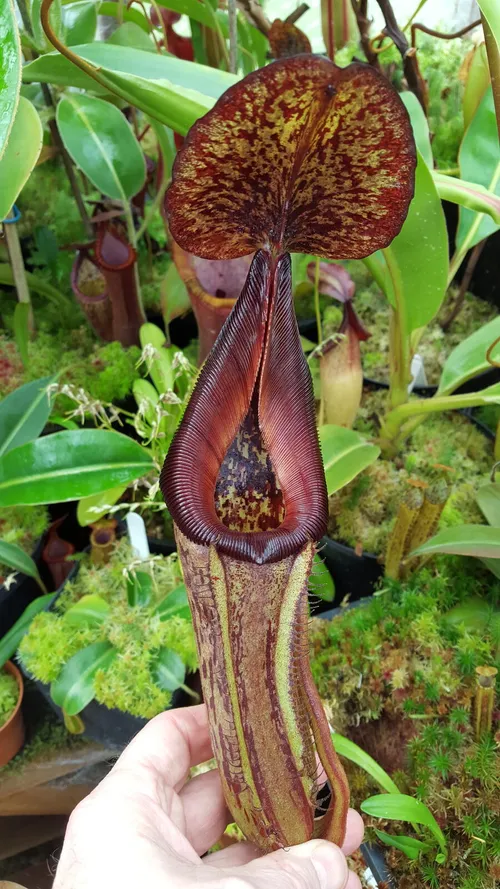 27. Nepenthes lowii x maxima 'dark'
27. Nepenthes lowii x maxima 'dark' 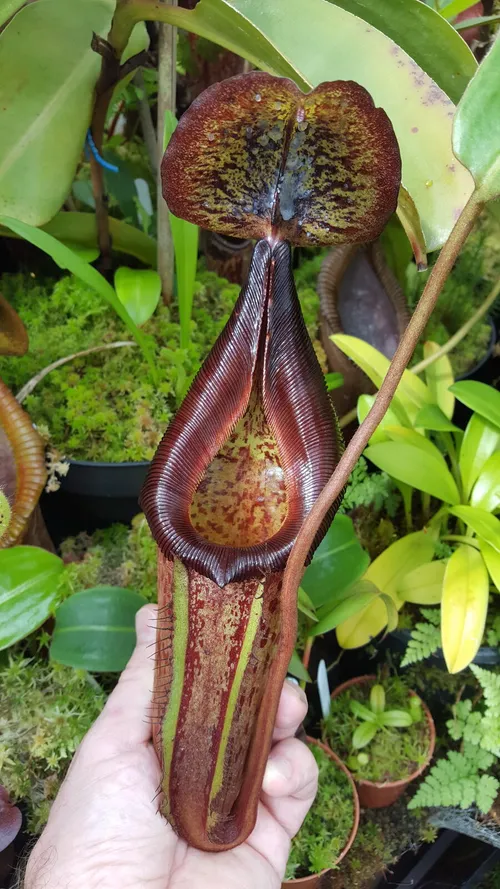 28. Nepenthes lowii x maxima 'dark'
28. Nepenthes lowii x maxima 'dark' 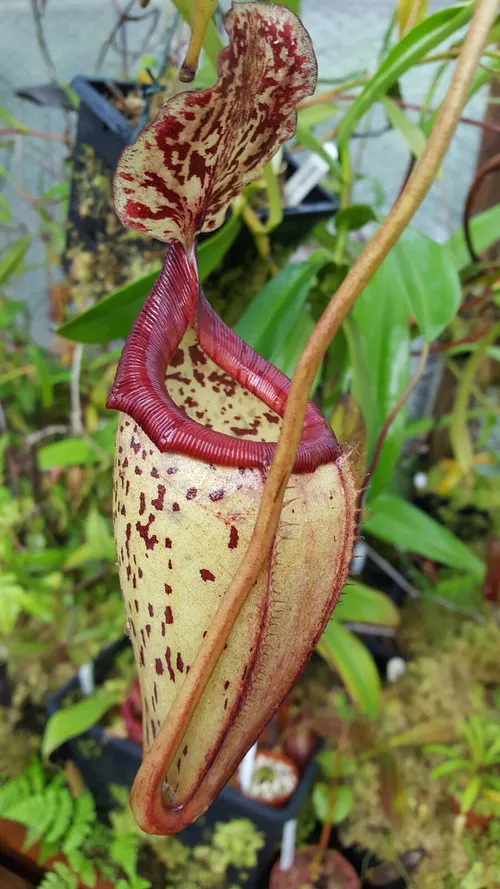 29. Nepenthes flava x burbidgeae
29. Nepenthes flava x burbidgeae .BxtXGsXx_DwTj1.webp) 30. Nepenthes x kinabaluensis (rajah x villosa)
30. Nepenthes x kinabaluensis (rajah x villosa) .CXo040Rc_asBTO.webp) 31. Nepenthes x kinabaluensis (rajah x villosa)
31. Nepenthes x kinabaluensis (rajah x villosa) .CFuzlFzn_ZmyzE1.webp) 32. Nepenthes x kinabaluensis (rajah x villosa)
32. Nepenthes x kinabaluensis (rajah x villosa) 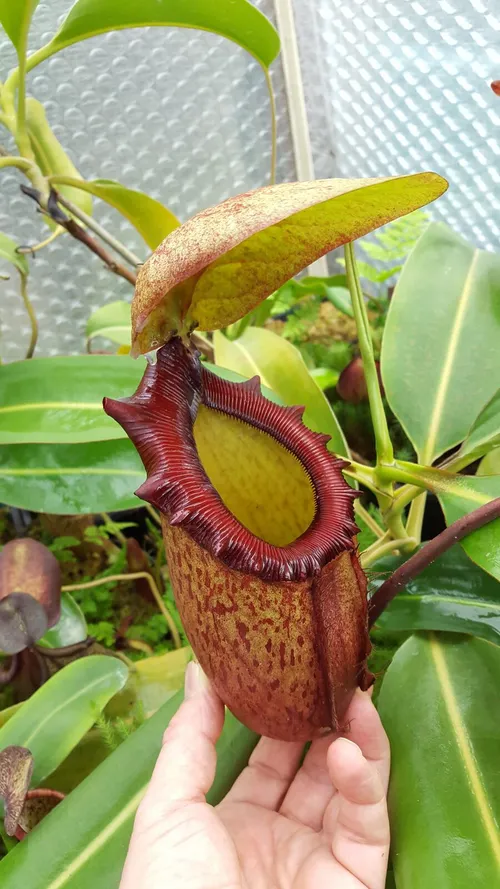 33. Nepenthes rajah
33. Nepenthes rajah .CQiC0f7S_KjTCu.webp) 34. Nepenthes rajah (BE)
34. Nepenthes rajah (BE) What are some of the things you’re proudest of during your time in the hobby? I know you’ve flowered N. lowii, N. rajah, N. hamata, N. ephippiata, and others. I’d love to learn more about some of these crosses.
Good question. I’m a naturally competitive person and I guess my initial dream when I started growing Nepenthes all those years ago was to have the biggest collection in the UK. There weren’t many serious growers then and I knew most of them. I certainly never achieved this goal; on growing space alone, it was never going to be possible. Grown well, Nepenthes get big, some very quickly, and as we all know you can never have enough growing space. I often raise my eyes when I see small N. rajah or N. lowii and similar plants growing in terrariums. As Roy Schneider said in Jaws, “You’re gonna need a bigger boat”.
Instead of focusing on the size of my collection, I decided to focus on growing the best quality plants that I could. In that respect I think I have been reasonably successful, and I have grown some very nice plants. One of my goals has been to grow some of my favourite species to flowering size, and except for N. villosa, N. macrophylla, and N. edwardsiana, I have achieved that. I think I am not too far away from also flowering those three species.
It is nice to get flowers, but often the better plants arise from cutting and pruning regularly, and as such you may not see a flower if you do this. I treat Nepenthes vines like I would any other climbing plant. Growers are often reluctant or nervous to cut them, but as soon as you see lateral node buds or basal shoots it is worth considering. You often get a much more vigorous and attractive plant as well as lots of material for rooting new cuttings.
Do you plan to name any other cultivars aside from the N. ‘Smilodon’?
Actually, N. ‘Smilodon’ isn’t an officially registered cultivar. I indulged myself and figured that after 30 years of growing I would name something. Besides, there any many established cultivars across all CP genera that we recognise but are not officially registered. I would love the name to be commonly accepted. Smilodon, or saber-toothed tiger as it was more commonly known, was a muscular mass of fur and teeth. I thought N. ‘Smilodon’ was quite an appropriate name for my cross N. ‘red hairy hamata’ x hamata ‘Lumut’. It really is a beautiful hybrid.
Click on any photo to zoom in. Use arrow keys or swipe to navigate.
.B9dm0R7v_13lyja.webp) 35. Nepenthes 'Smilodon' (N. 'red hairy hamata' x hamata)
35. Nepenthes 'Smilodon' (N. 'red hairy hamata' x hamata) .DBwGVs5D_Z1xn3Lf.webp) 36. Nepenthes 'Smilodon' (N. 'red hairy hamata' x hamata)
36. Nepenthes 'Smilodon' (N. 'red hairy hamata' x hamata) .cA-JwTaL_Z1bICuj.webp) 37. Nepenthes 'Smilodon' (N. 'red hairy hamata' x hamata)
37. Nepenthes 'Smilodon' (N. 'red hairy hamata' x hamata) 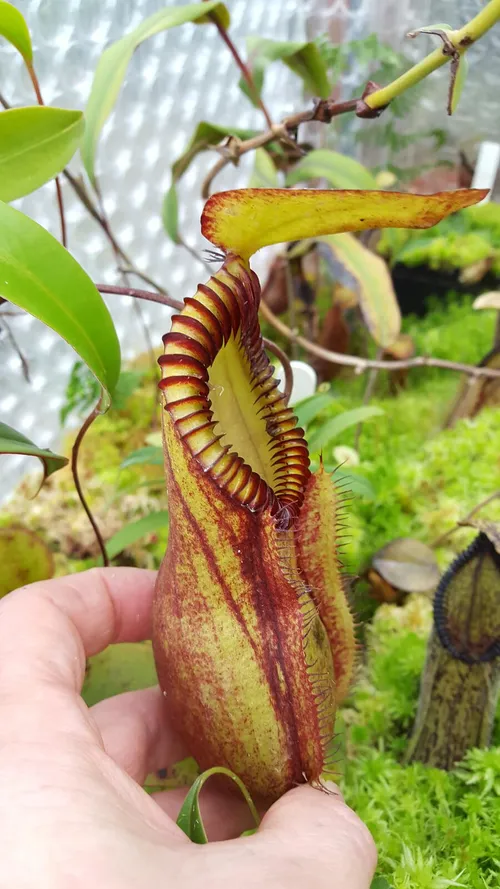 38. Nepenthes 'red hairy hamata'
38. Nepenthes 'red hairy hamata' 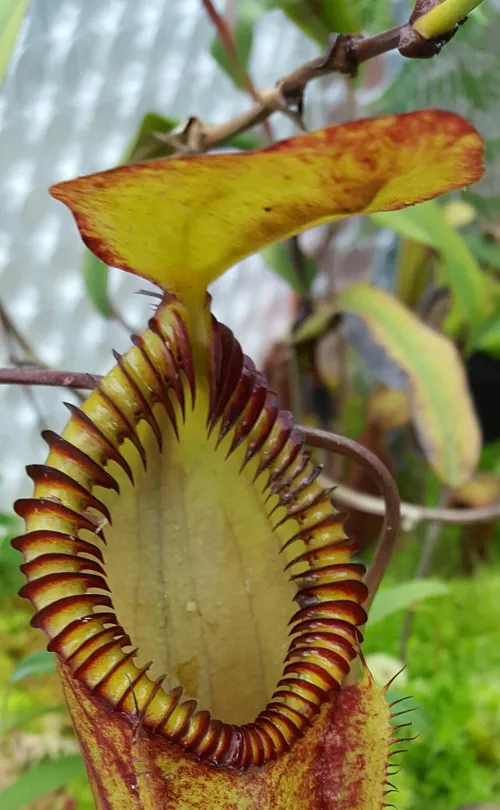 39. Nepenthes 'red hairy hamata'
39. Nepenthes 'red hairy hamata' .C5W0Uk86_50tRC.webp) 40. Nepenthes macrophylla (AW)
40. Nepenthes macrophylla (AW) 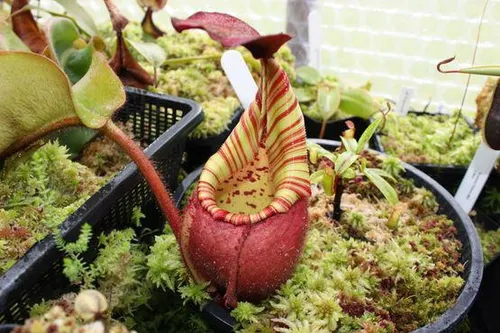 41. Nepenthes veitchii 'Candy'
41. Nepenthes veitchii 'Candy' 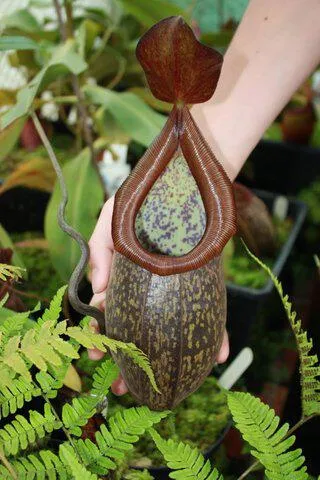 42. Nepenthes rigidifolia
42. Nepenthes rigidifolia As I mentioned earlier I try to be selective about what species or hybrids I grow, and I have actually made very few hybrids. I’m not excited by making hybrids for the sake of it, and if I have no suitable pollen for a female flower I will cut the flowers off. My first ever hybrid, made nearly 10 years ago, was a reportedly natural hybrid between N. argentii and N. sibuyanensis and despite all the Nepenthes expeditions to Mt Guiting-Guiting I have still never seen any photos documenting this hybrid. I think this was probably the first N. argentii hybrid made in cultivation. The pollen for this was donated by Matt Richardson and several seedlings were distributed to growers. I have an interest in natural hybrids and I hope to make some nice ones soon. There are also certain species that I like in horticultural hybrids such as N.burbidgeae, N. flava and N. densiflora.
You mentioned that you used to have a website for selling plants. Do you currently sell to other nurseries, botanic gardens etc, or just to private collectors? Have you ever thought about starting a commercial nursery?
As I mentioned above, I was one of the first importers of plants for Borneo Exotics starting in 2002 / 2003 with occasional shipments from Exotica Plants and Malesiana Tropicals. I used to sell these on a website called Treesmill Tropicals and distributed my plants within the UK and EU. Many of the older established growers will know me from those days and I know some growers still have old plants that they obtained from me.
I enjoyed importing and selling, but it was only a short-term venture and the aim wasn’t to start a business. It was just for fun, and it helped me build my own collection. I think too many people start a hobby like this and try to make a full-time business from it, and then it stops being fun. They over-expand and think big too quickly, often with heavy financial losses. Growing and selling a few plants for fun is very different from growing plants to pay bills.
With hindsight, if I’d had the vision and motivation, I could have considered tissue culture. I had lots of plants and flowers, and I am a molecular biologist by profession. It would have been relatively easy to pick this technique up, which was perhaps a missed opportunity.
There are many new growers trying to establish tissue culture-based businesses, and good luck to them, but in my opinion unless you have a big selection and regular new introductions it will be very difficult to compete with the well-known established suppliers. I see no financial gain in establishing more TC stocks of common Nepenthes species. Additionally, many people are now producing seed in cultivation which will only add to the competition.
These days I sell a few plants every now and again. They tend to be spares I have from seedlings or from cuttings that I have made. The proceeds usually go towards my next Nepenthes expedition, running costs, or just more plants! It’s nice to have a hobby that can pay for itself.
Finally, where do you meet or chat to other growers? Over the last few years I’ve noticed a move away from forums and dedicated CP websites, and over to social networks like Facebook and Instagram. Do you use these platforms?
These days most of my communication with other growers is by Facebook/Messenger or private email. In the early days I posted regularly on the CPUK and US Terraforum web sites under the avatar name ‘Threeskins’. On the latter site I used to love contributing to the Pitcher of the Month competition - this might be something that we could introduce to the Facebook forum. It’s a bit of fun and there’s a certain amount of kudos in winning.
There you go, my competitive nature coming out again.
Many thanks to Simon for taking the time to speak with me and for sharing photos of his collection.
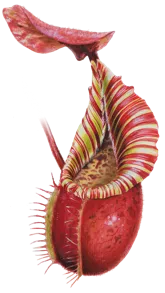
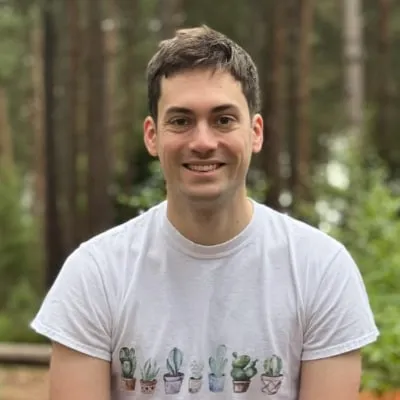
.cA-JwTaL_Z28irfY.webp)